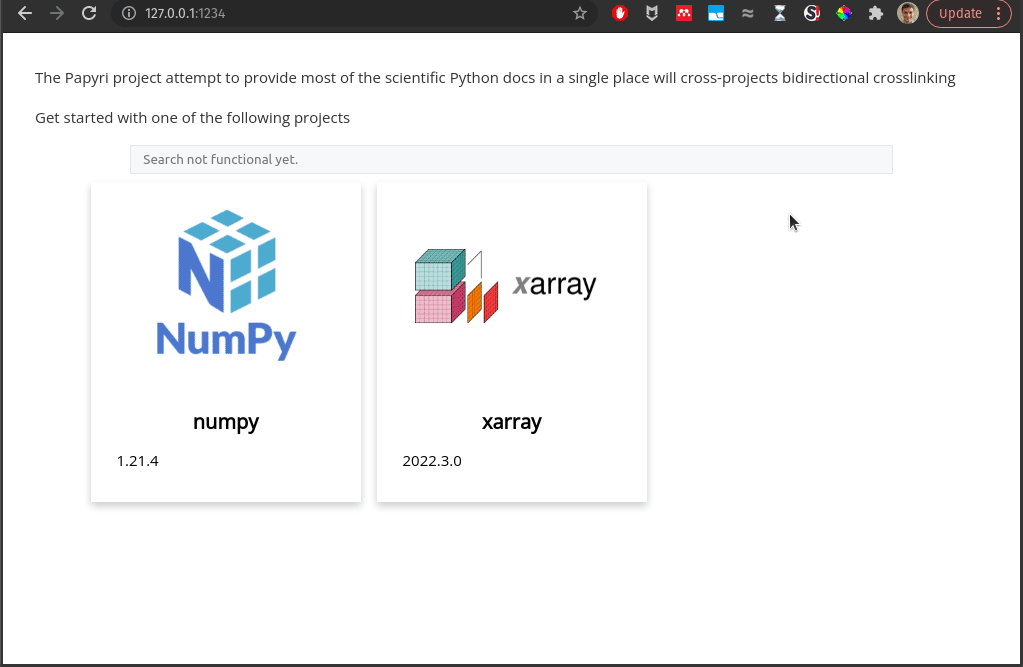issues: 1307212158
This data as json
| id | node_id | number | title | user | state | locked | assignee | milestone | comments | created_at | updated_at | closed_at | author_association | active_lock_reason | draft | pull_request | body | reactions | performed_via_github_app | state_reason | repo | type |
|---|---|---|---|---|---|---|---|---|---|---|---|---|---|---|---|---|---|---|---|---|---|---|
| 1307212158 | I_kwDOAMm_X85N6nl- | 6801 | Use Papyri to explore documentation | 35968931 | open | 0 | 0 | 2022-07-17T21:21:21Z | 2022-09-12T18:35:21Z | MEMBER | What is your issue?At Scipy @Carreau demo'ed a new docs engine: Papyri. (You can find the talk slides here). In short it looks awesome, and we should use it to improve our docs! You should watch the talk, but Papyri allows:
There is also a jupyter-lab extension in the works. One of the examples in the talk uses xarray docs, as papyri builds from our Here I have "ingested" both xarray and numpy docs, which papyri's explorer dynamically links together in both directions.
I think this is super cool, and we should think about using it. However the project is extremely early stage, and currently has many bugs, and no unified way to ship it (the example was made locally). I encourage other xarray devs to have a look and a think about how we can use it / benefit / test it out though! |
{
"url": "https://api.github.com/repos/pydata/xarray/issues/6801/reactions",
"total_count": 1,
"+1": 1,
"-1": 0,
"laugh": 0,
"hooray": 0,
"confused": 0,
"heart": 0,
"rocket": 0,
"eyes": 0
} |
13221727 | issue |
